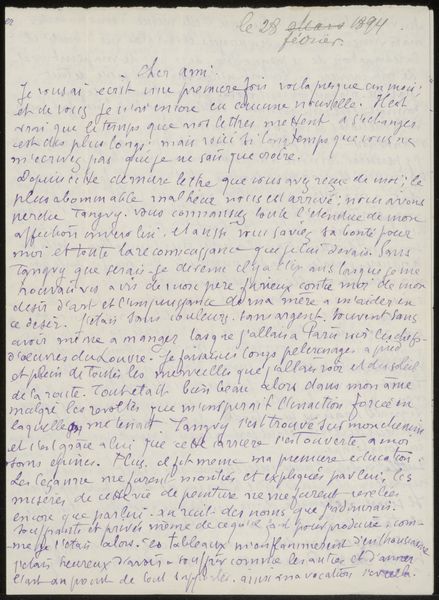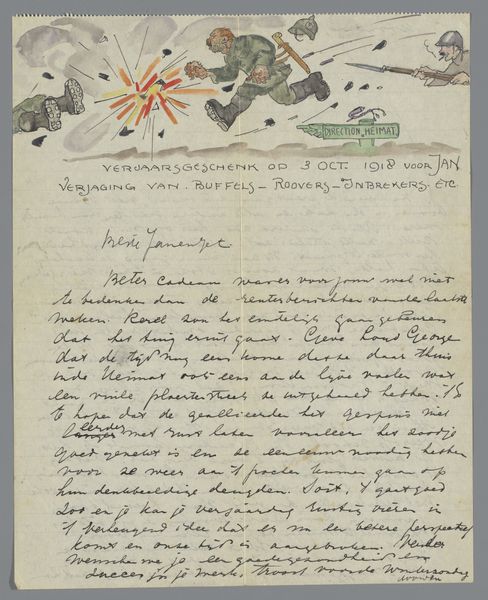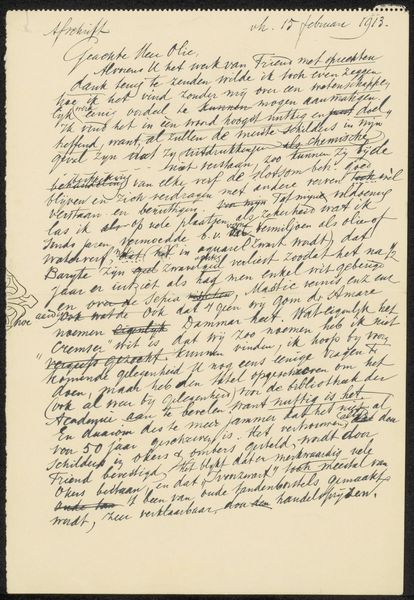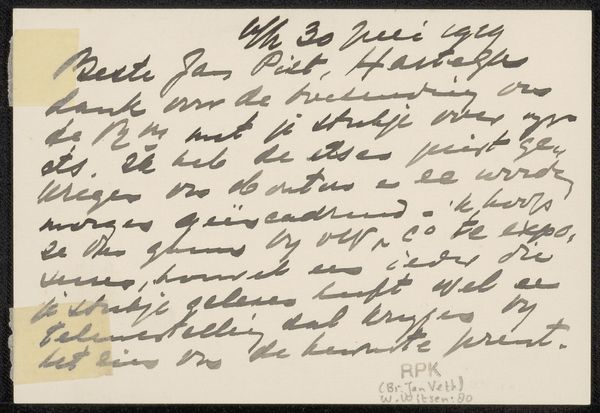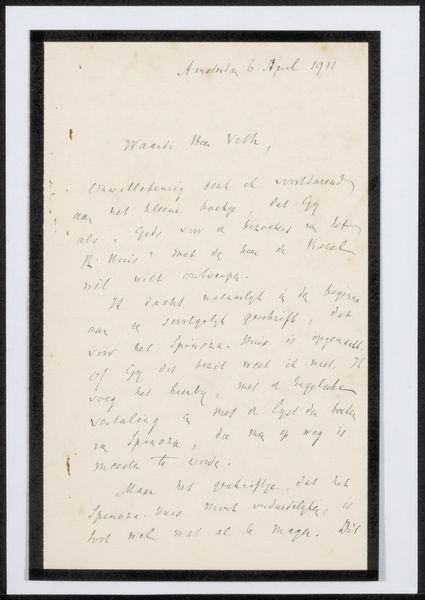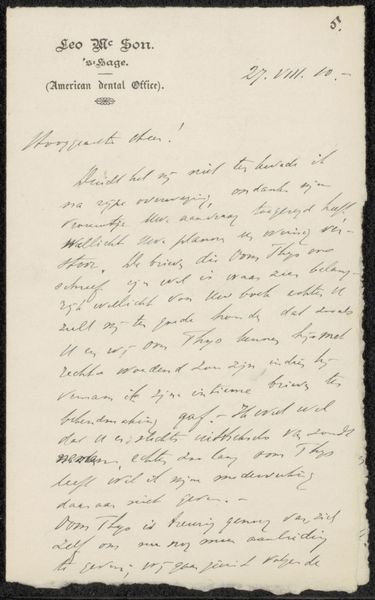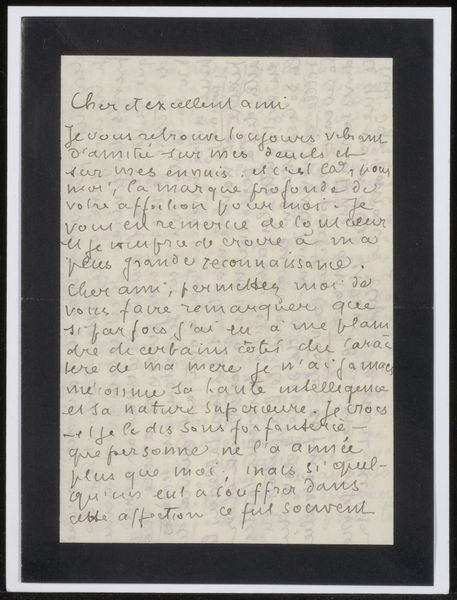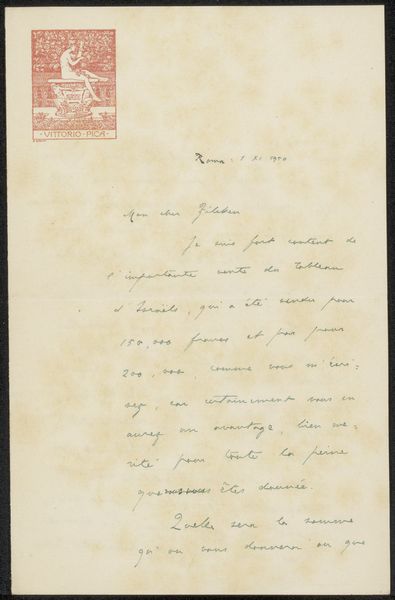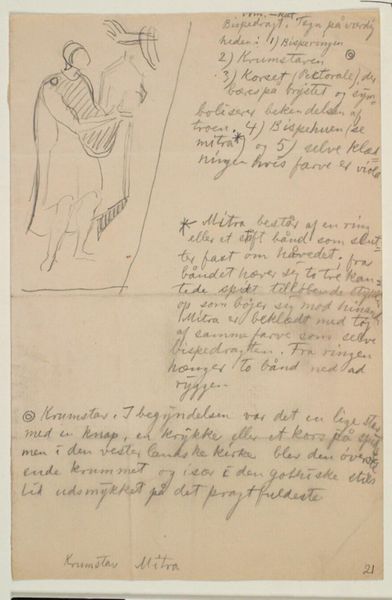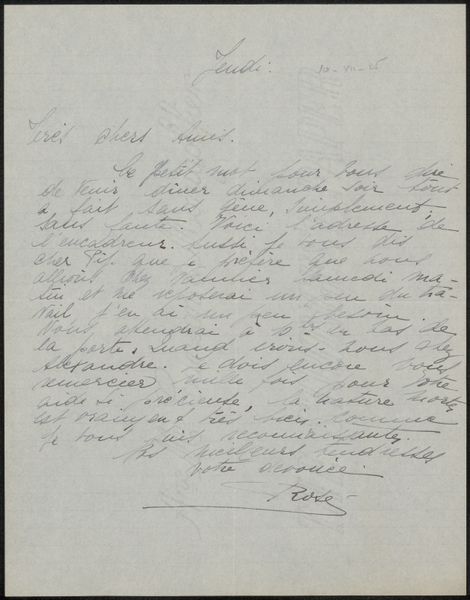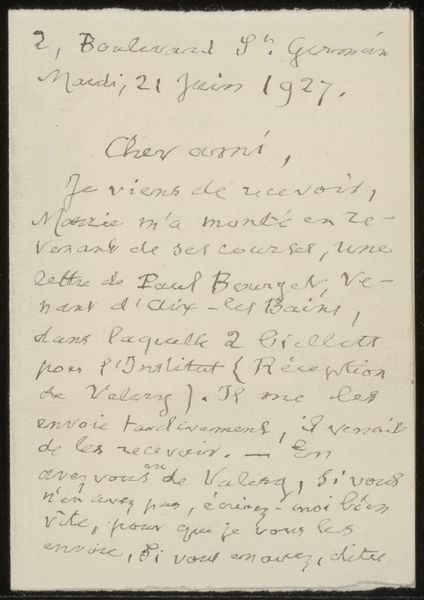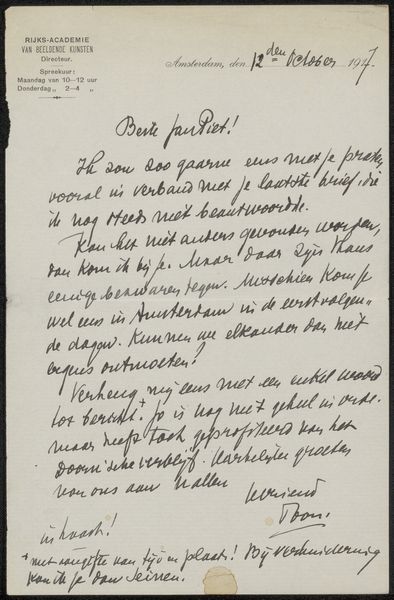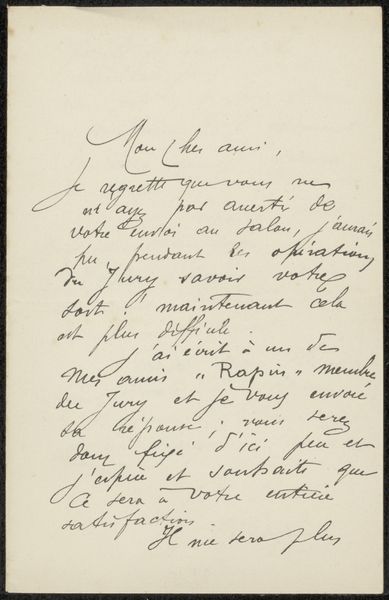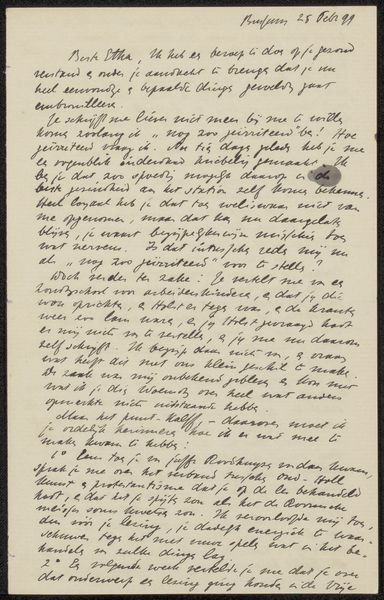
drawing, textile, ink, pen
#
drawing
#
textile
#
ink
#
pen-ink sketch
#
sketchbook drawing
#
pen
Copyright: Rijks Museum: Open Domain
Editor: We’re looking at "Brief aan Andries Bonger," a letter from Émile Bernard to Andries Bonger, made before 1922. It’s a pen and ink drawing on textile. The letter appears casual yet it conveys an intimate exchange. What historical context is key to appreciating this piece fully? Art Historian: This letter transcends simple correspondence; it’s a window into the intense artistic and intellectual ferment of the late 19th and early 20th centuries. Knowing that both Bernard and Bonger were deeply enmeshed in the Post-Impressionist circle, particularly through their connections to Vincent van Gogh, shifts how we understand this work. Think about how networks of artists and patrons, like Bonger, supported innovative art during a period of rapid social change. Editor: So, Bonger being a patron is really important here? How would that relationship affect what was written? Art Historian: Absolutely. Bonger provided crucial financial and emotional backing to artists, especially Van Gogh. Bernard’s letter may contain hidden anxieties and power dynamics in their art community. Consider also the physical nature of the letter. Ink on textile suggests resourcefulness, but also a kind of preciousness. It transforms a common communiqué into something deliberately artistic. The fact it’s on "La Rénovation Esthétique" stationary emphasizes a commitment to a renewed vision of aesthetics at the turn of the century, when old traditions were being questioned. How do you read the choice to pen this letter rather than a simpler card? Editor: I hadn’t considered how the physical aspects really elevate it to a conscious art form. I was mainly seeing it as a letter but the approach has expanded my perception of it! Art Historian: Precisely. These letters helped disseminate ideas that were defining and disrupting modern aesthetics and continue to shape our cultural landscape today. It reflects the spirit of artists using whatever was available to promote social commentary through artistic innovation. It allows art historical artifacts such as correspondence to speak directly about marginalized identities.
Comments
No comments
Be the first to comment and join the conversation on the ultimate creative platform.
